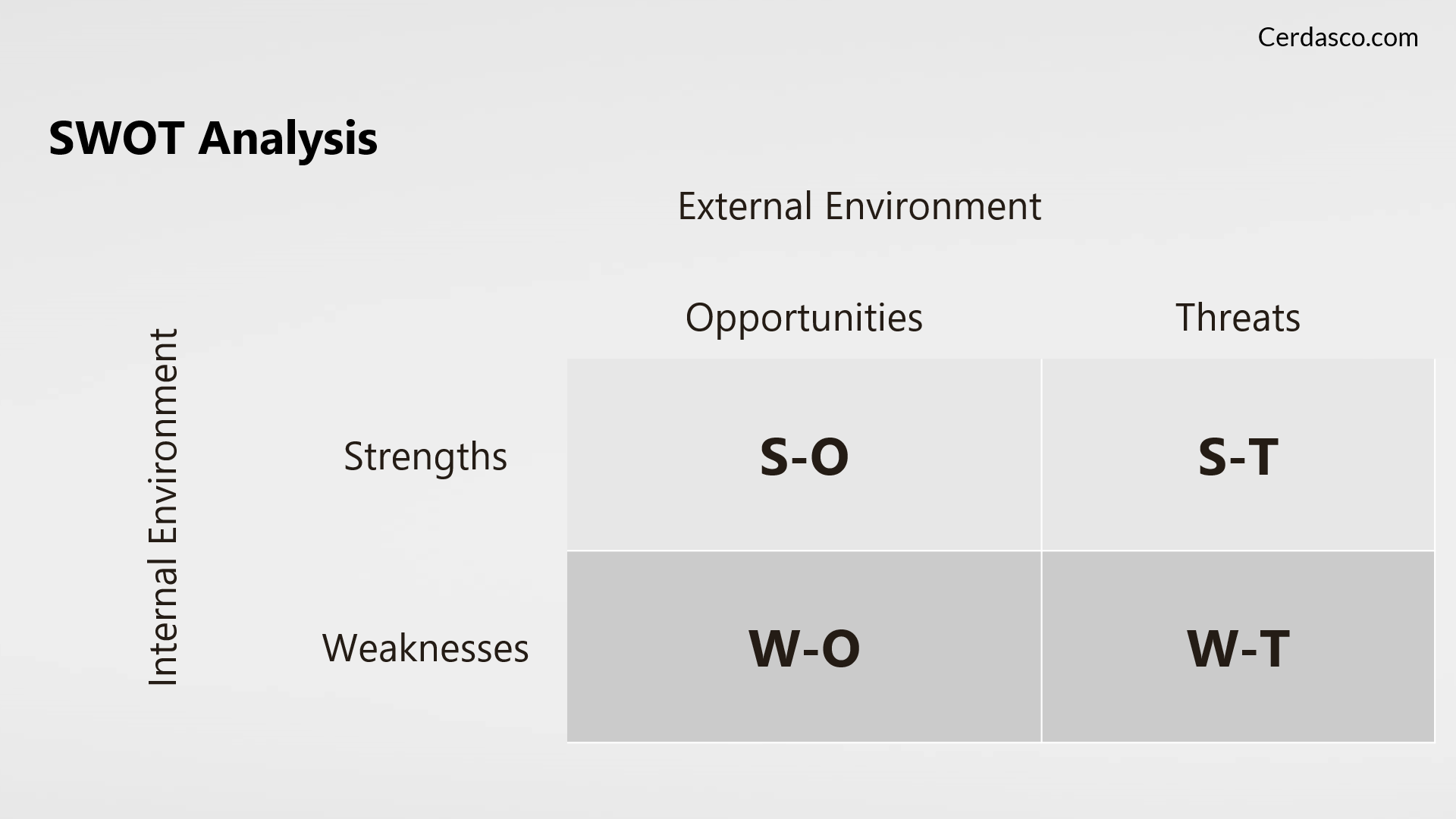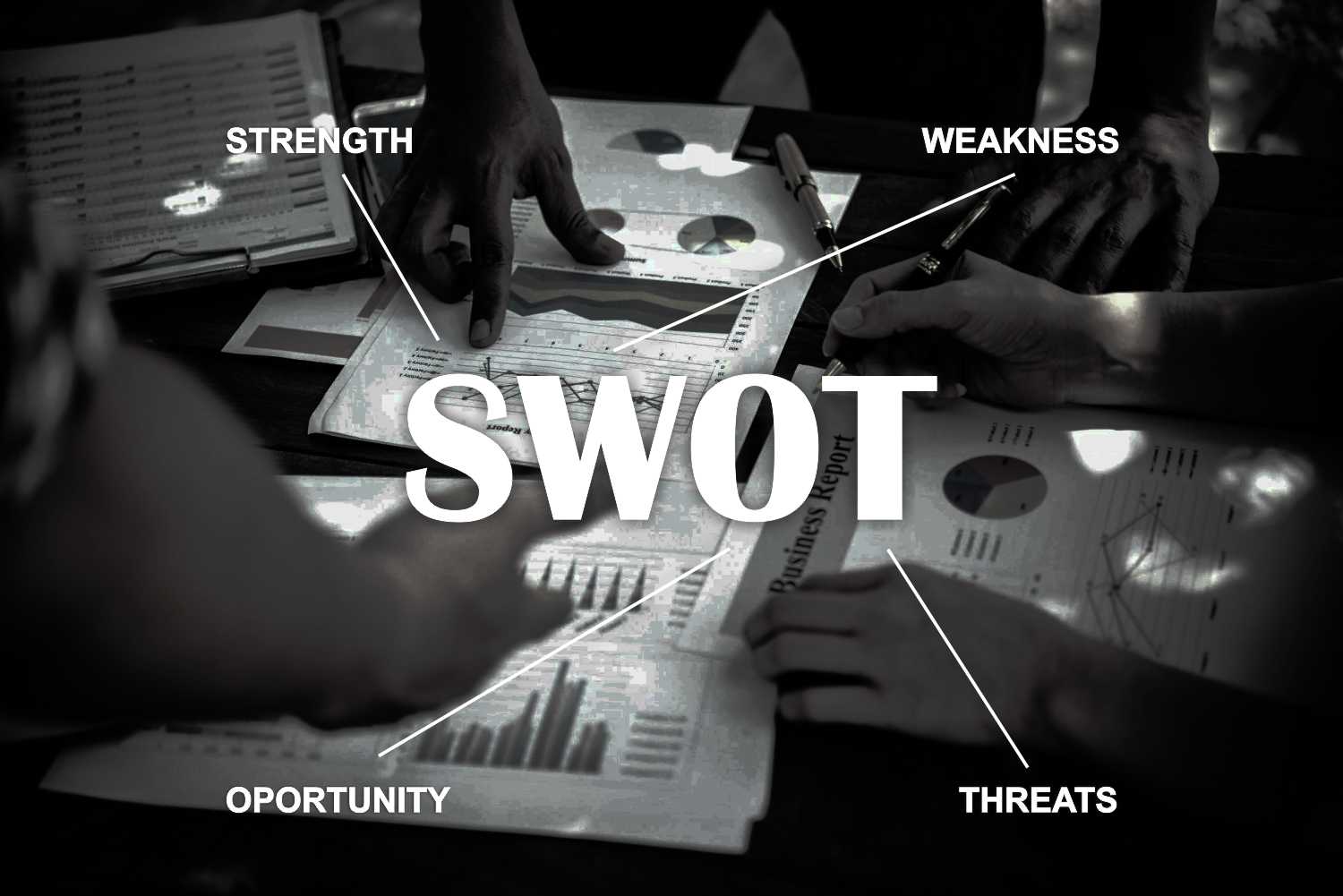Strengths, Weaknesses, Opportunities, Threats is an acronym for SWOT. SWOT Analysis is a strategic planning techniques that are useful for evaluating the strength and weakness , opportunities and threats in a project. Here will also be discussed about examples of SWOT Analysis for companies.
But of course, both analysis for an ongoing project or one that is in new planning.
SWOT analysis was first introduced by Albert S Humphrey in the 1960s in leading a research project at the Stanford Research Institute using data from Fortune 500 companies.
The benefits of SWOT analysis are as follows
The SWOT analysis method is the right tool to find problems from 4 (four) different sides, where the applications are:
- How strength are able to take advantage of an opportunity that exist.
- How to overcome the weaknesses that prevent profits.
- How the strengths able to deal with threats that exist.
- How to overcome weaknesses that are able to make threats become real or create a new threat.
With the interconnectedness of these 4 factors, making this analysis makes it easy to realize the vision and mission of a company.

SWOT Analysis Example
The following is a simple example of conducting a SWOT analysis to evaluate a company’s strengths, weaknesses, opportunities, and threats.
Strength
Strengths are the strengths of your business, such as quality, location, or other elements that make you superior to your competitors. List as many strengths as you can so you can see what sets your business apart from similar businesses that are similar to yours.
- We can respond quickly to every customer request without having to go through a long bureaucracy.
- We have low overhead costs, so we can offer our customers the best possible price.
- We pay close attention to every customer’s requests and needs.
- We are very flexible in handling each case and customer request.
- We have a good reputation in our market.
Weakness
Weakness is the weakness of your business when compared to competitors. Estimate all the shortcomings you have so that when you want to do a promotion, you can find out which points have a “safe” location so that they don’t mention the weaknesses of your business.
- Our staff still has low ability in certain areas.
- Our company has limited capital.
- Cash flow is sometimes not smooth.
- The location of the office is in a less strategic place.
Opportunity
Opportunity is an opportunity that you can achieve after analyzing your position through the two internal factors above. Opportunities can also be determined by calculating the budget that you will spend on certain promotions or advertisements.
- The sector we are working in is on the rise.
- The government is very supportive of local companies like us.
- There is no intense competition in the sector we are engaged in.
- Only with low capital we can start a business well.
Threat
Simply put, external factors are things you cannot manage as a business owner. High risk requires business owners to analyze threats in order to prepare loss prevention strategies. Threat factors that must be considered are natural disasters, technological developments, competitor activities, and changes in government regulations.
- The rapid development of technology in this area is beyond our capabilities and may cause us to be late in adopting it.
- Changes to competitors’ strategies could threaten our position in this area.
- Lack of banking interest in financing funding for the industry we are currently working on.
Factors Affecting SWOT Analysis
There are 2 main factors that will influence the four basic components of a SWOT analysis.

External and internal factors that will affect the analysis of Strength, Weakness, Opportunities, Threats are:
Internal Factors (Strength dan Weakness)
Internal factors or factors that come from within consist of two points, namely strengths and weaknesses.
Both will perform better in a study when strengths outweigh weaknesses.
Thus the maximum internal strength will obviously give much better research results.
As for the part of the internal factors themselves, including the resources owned, financial or financial, internal strengths or weaknesses of the organization, as well as previous organizational experiences (both successful and failed).
External Factors ( Opportunities and Threats )
This is a factor from outside the entity, where this factor is not directly involved in what is being researched and consists of 2 points, namely threats and opportunities.
The existence of these opportunities and threats will of course provide data that must be included in research journals so as to produce strategies to deal with them.
Several points are included in external factors, including trends, culture, socio-politics, ideology, and the economy , sources of capital, government regulations, technological developments, events that occur, and the environment.
SWOT Analysis Combination Strategy
In the analysis, you can focus on a combination of the two SWOT points to determine the strategic steps of your business . These focus combinations include:
- Focus on strengths-opportunities (SO) to obtain offensive alternatives by using internal strengths to take advantage of external opportunities.
- Focus on Weaknesses (WT) to obtain defensive alternatives by exploiting internal weaknesses to reduce external threats.
- Focus on Strength-threats (ST) by using internal strengths to reduce external threats.
- Focus on Weaknesses (WO) by shoring up internal weaknesses to take advantage of external opportunities.
As a method in general, this SWOT analysis can only help analyze the situation being faced by a company or an organization.
This means that in principle this method is not a definite answer that is able to provide a solution to every problem at hand.
But at least it will break down the existing problem by breaking it down into small parts that will look simpler.
In addition to making a SWOT analysis, companies must also start to make a proper financial analysis.
For advance guide, please read this article from corporatefinanceinstitute.com

